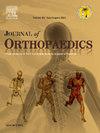髋关节镜检查后两年无反应的预测因素:来自机构前瞻性登记的结果
IF 1.5
Q3 ORTHOPEDICS
引用次数: 0
摘要
目的:基于调查的研究本质上受无反应偏倚的影响。全面了解导致无反应的因素对于最小化损耗偏差和确保结果的普遍性是很重要的。本研究的目的是确定髋关节镜术后2年调查无反应的术前因素。方法对2015年10月至2020年3月期间在单一中心接受髋关节镜检查的患者进行前瞻性登记。患者在基线和术后1年和2年通过电子邮件进行电子调查。主要结果是对术后2年调查的反应。在一系列标准化的电子邮件、短信和电话提醒后,未能完成术后2年调查的任何部分的患者被视为无应答者。使用Pearson Chi-Squared或Wilcoxon Rank-Sum检验比较各组之间的基线社会人口统计学和患者报告的结果(PROs)。使用逻辑回归来确定无反应的预测因素。结果99例患者入组并完成基线调查。2年时有25例无反应(25%)。无反应的患者中男性比例更高,被认定为非白人,对术后1年的调查没有反应。应答者和无应答者的基线PROs无差异。在控制年龄和性别的情况下,非白人患者(OR = 4.3, 95% CI[1.3, 14.4])和对术后1年调查无反应的患者(OR = 4.5, 95% CI[1.5, 13.8])更有可能在2年无反应。结论术后1年调查无反应和非白种人是髋关节镜术后2年无反应的独立预测因素。基线赞成度在应答者和无应答者之间没有差异。本文章由计算机程序翻译,如有差异,请以英文原文为准。
Predictors of survey non-response two years after hip arthroscopy: Results from an institutional prospective registry
Purpose
Survey-based studies are inherently subject to non-response bias. A comprehensive understanding of the factors contributing to non-response is important for minimizing attrition bias and ensuring generalizability of results. The purpose of this study was to determine the preoperative factors associated with survey non-response 2 years after hip arthroscopy.
Methods
Patients undergoing hip arthroscopy at a single center between October 2015 and March 2020 were approached for enrollment in a prospective registry. Patients were emailed an electronic survey at baseline and at 1 and 2 years postoperatively. The primary outcome was response to the 2-year postoperative survey. Patients who failed to complete any part of the 2-year postoperative survey after a series of standardized email, text message, and phone call reminders were considered non-responders. Baseline sociodemographics and patient-reported outcomes (PROs) were compared between the groups using Pearson Chi-Squared or Wilcoxon Rank-Sum tests. Logistic regression was used to identify predictors of non-response.
Results
Ninty-nine patients were enrolled and completed the baseline survey. There were 25 non-responders (25 %) at 2 years. Non-responders demonstrated a higher proportion of patients who were male, identified as non-white, and did not respond to the 1-year postoperative survey. There were no differences in baseline PROs between responders and non-responders. When controlling for age and sex, patients who did not identify as white (OR = 4.3, 95 % CI [1.3, 14.4]) and patients who did not respond to the 1-year postoperative survey (OR = 4.5, 95 % CI [1.5, 13.8]) were more likely to be non-responders at 2 years.
Conclusion
Not responding to 1 year postoperative survey and non-white race are independent predictors of non-response at 2 years after hip arthroscopy. Baseline PROs do not differ between responders and non-responders.
求助全文
通过发布文献求助,成功后即可免费获取论文全文。
去求助
来源期刊

Journal of orthopaedics
ORTHOPEDICS-
CiteScore
3.50
自引率
6.70%
发文量
202
审稿时长
56 days
期刊介绍:
Journal of Orthopaedics aims to be a leading journal in orthopaedics and contribute towards the improvement of quality of orthopedic health care. The journal publishes original research work and review articles related to different aspects of orthopaedics including Arthroplasty, Arthroscopy, Sports Medicine, Trauma, Spine and Spinal deformities, Pediatric orthopaedics, limb reconstruction procedures, hand surgery, and orthopaedic oncology. It also publishes articles on continuing education, health-related information, case reports and letters to the editor. It is requested to note that the journal has an international readership and all submissions should be aimed at specifying something about the setting in which the work was conducted. Authors must also provide any specific reasons for the research and also provide an elaborate description of the results.
 求助内容:
求助内容: 应助结果提醒方式:
应助结果提醒方式:


